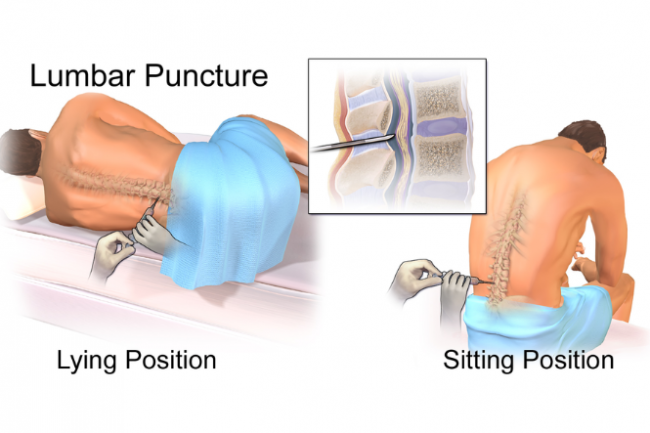A lumbar puncture is most commonly performed in hospital, either during an appointment or an inpatient stay. You don't need to do anything specific to prepare for it. The doctor will discuss the reason they want to do the test and any risks involved and will give you time to ask questions before signing a consent form.
You will lie on your side, legs pulled up with your chin tucked in, or you may be seated and leaning forward. This helps open up the space between the vertebrae (bones in your spine).
Image credit: BruceBlausen Wikimedia Commons
When you and the doctor are ready to begin, they will give you a small local anaesthetic injection into your skin before a needle is inserted between 2 vertebrae into your spinal canal.
Once the needle is in the right place, a few drops of cerebrospinal fluid are collected into a sterile container and sent to the lab. If needed, the spinal pressure can also be measured.
- The needle is only in your back for a few minutes although the whole procedure takes 20–45 minutes.
- You will have a small plaster over the exit point.
- Once finished, you will be asked to stay in bed, or sitting down for a short while, before getting up to walk.
- It is safe to walk around after the procedure as walking hasn't been shown to increase the risk of developing a headache or backache. However, it is still best to take it easy for the rest of the day.






